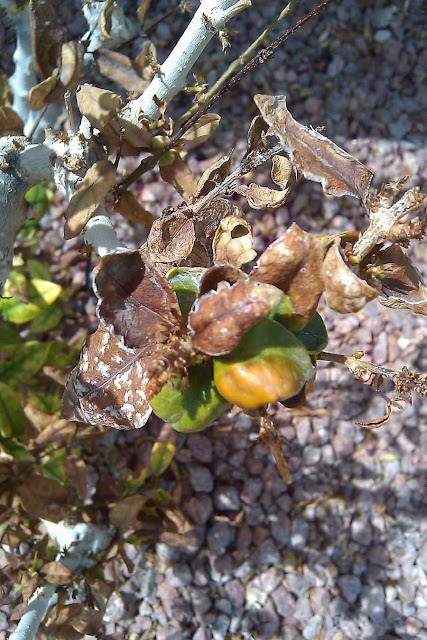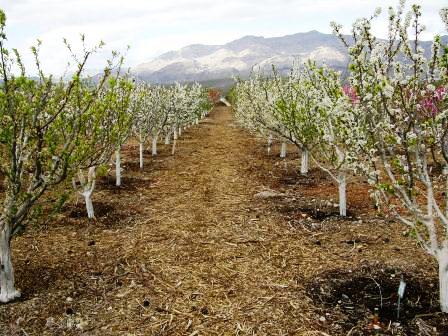 |
| Its like backpedaling when you try to amend the soil after planting. Do it at the beginning and save yourself some grief and hard work. |
A. As a friend of mine would say, “Pay me now or pay me later.” At some point you will pay the price for good plant growth and modify the soil at planting time or later when it is more difficult.
Amend Soil at Planting Time
Whether
it is raw desert soil or imported “soil” brought into the development by the
developer, soils in developments are typically horrible in the Las Vegas
valley. Constructing planting holes at the very beginning and using amendments
are extremely important for good plant growth. Its cheap insurance.
Oleanders like Wet Winters and Hot Dry Summers
Oleanders
are Mediterranean plants. They grow well in a Mediterranean climate and soils
but need some help when grown in the desert. The help is in the form of
constructing a decent planting hole, using soil amendments that encourage good
growth when the plant is young, and adding supplemental water. They love the
heat and low humidity of our desert environment.
Now you
have the job of amending the soil after it has been planted. Hopefully, your
oleanders were planted with at least six hours of full sun every day. If not,
prune any interfering trees so that they receive enough sunlight.
Fixing Trees After Planting
Auger
holes 12 inches deep around these plants so the holes occupy about half of the
surface area. Fill these holes with a rich compost or make a rich compost by
mixing a granular fertilizer like 16-16-16 with standard compost at the rate of
two Grande coffee cups full for each cubic foot of compost.
Construct
a donut around the plant for containing the irrigation water and hand irrigate
for about two weeks filling the donut each time. After that, let your
irrigation system take over. Prune it after about three to four years of growth
and fertilize lightly each spring.











































